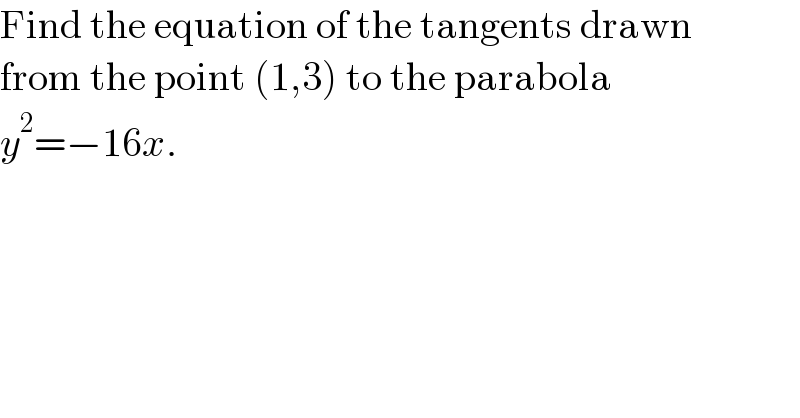
Question and Answers Forum
Question Number 157487 by ZiYangLee last updated on 23/Oct/21

Answered by mr W last updated on 23/Oct/21
![say the tangent line is x=1+k(y−3) y^2 =−16[1+k(y−3)] y^2 +16ky+16(1−3k)=0 it should have only one root. (16k)^2 −4×16(1−3k)=0 4k^2 +3k−1=0 (4k−1)(k+1)=0 ⇒k=−1, (1/4) x=1−(y−3) ⇒y=−x+4 x=1+((y−3)/4) ⇒y=4x−1](Q157490.png)
Commented by mr W last updated on 23/Oct/21

Answered by cortano last updated on 24/Oct/21

| ||
Question and Answers Forum | ||
Question Number 157487 by ZiYangLee last updated on 23/Oct/21 | ||
 | ||
Answered by mr W last updated on 23/Oct/21 | ||
![say the tangent line is x=1+k(y−3) y^2 =−16[1+k(y−3)] y^2 +16ky+16(1−3k)=0 it should have only one root. (16k)^2 −4×16(1−3k)=0 4k^2 +3k−1=0 (4k−1)(k+1)=0 ⇒k=−1, (1/4) x=1−(y−3) ⇒y=−x+4 x=1+((y−3)/4) ⇒y=4x−1](Q157490.png) | ||
| ||
Commented by mr W last updated on 23/Oct/21 | ||
 | ||
Answered by cortano last updated on 24/Oct/21 | ||
 | ||
| ||